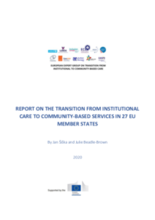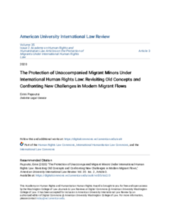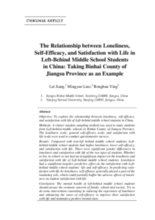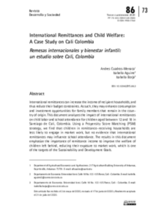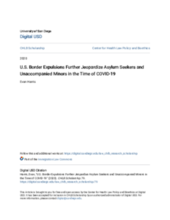Displaying 251 - 260 of 824
The aim of this report was to collate information about policies and plans, changes over time, strengths and areas of concerns relevant to advancement in deinstitutionalisation in 27 EU countries and for six target groups: adults with disabilities, adults with mental health problems, children (including children with disabilities), unaccompanied or separated migrant children, homeless persons and older adults.
Data and Trend Analysis (DATA) Refugees and Migrants at the Western Balkans Route Regional Overview, covering period April – June 2020, describes key trends in migrations in the region, detailing information about the number of people on the move, demography (age, sex, country of origin, etc), behavioral patterns, and routes in use - with a focus on children, particularly unaccompanied children.
This How We Care series examines how three of Family for Every Child's Members are promoting the effective integration and reintegration of children on the move through their programming.
Considering the challenges modern migration crisis has posed on both a practical and theoretical basis, this article takes a thorough look at the protection of unaccompanied minors under international human rights law with the aim to present the main issues that need to be revisited and the areas that require further development.
The purpose of this study was to explore the relationship between loneliness, self-efficacy, and satisfaction with life of Left-behind middle school students in China.
This report consolidates findings from a rapid participatory consultation with: (1) migrant girls in the Northeastern Colombia border region, (2) front-line practitioners providing services to migrant children and their families, and (3) Save the Children teams in Colombia.
This document analyzes the impact of international remittances on child labor and school attendance for children aged between 12 and 18 in Santiago de Cali, Colombia.
This report describes key trends in migrations in the Balkans region, detailing information about the number of people on the move, demography (age, sex, country of origin, etc), behavioral patterns, and routes in use - with a focus on children, particularly unaccompanied children.
The author of this article argues that "by authorizing the rapid expulsion of vulnerable persons despite limited epidemiological justification as well as clear legal alternatives, the order stands as a gross violation of the United States’ historical policy to welcome and protect those seeking refuge at our borders."
This article describes the development of an information system, built in order to monitor the data gathered in the context of a pilot project for early child protection interventions with unaccompanied minors.

